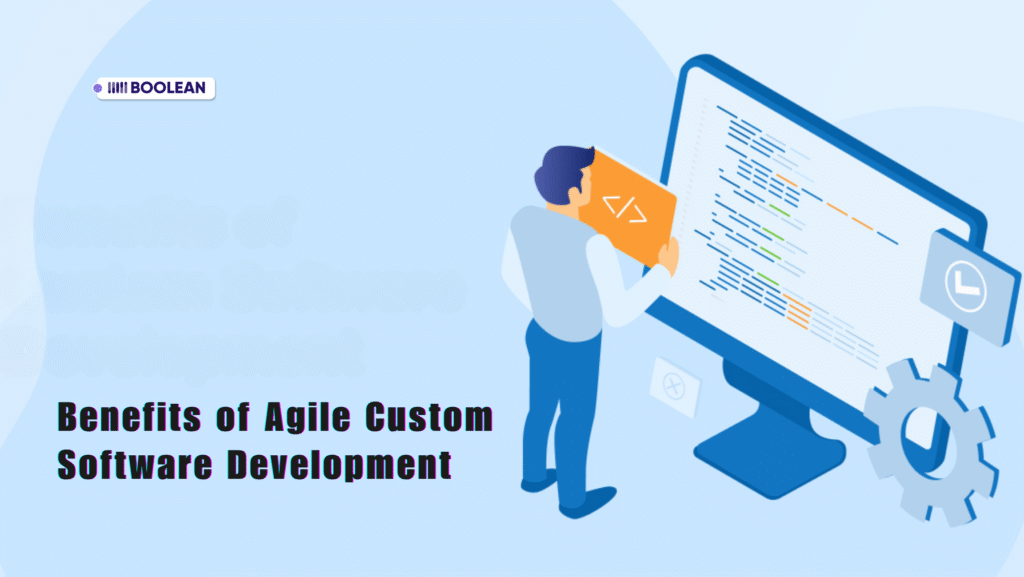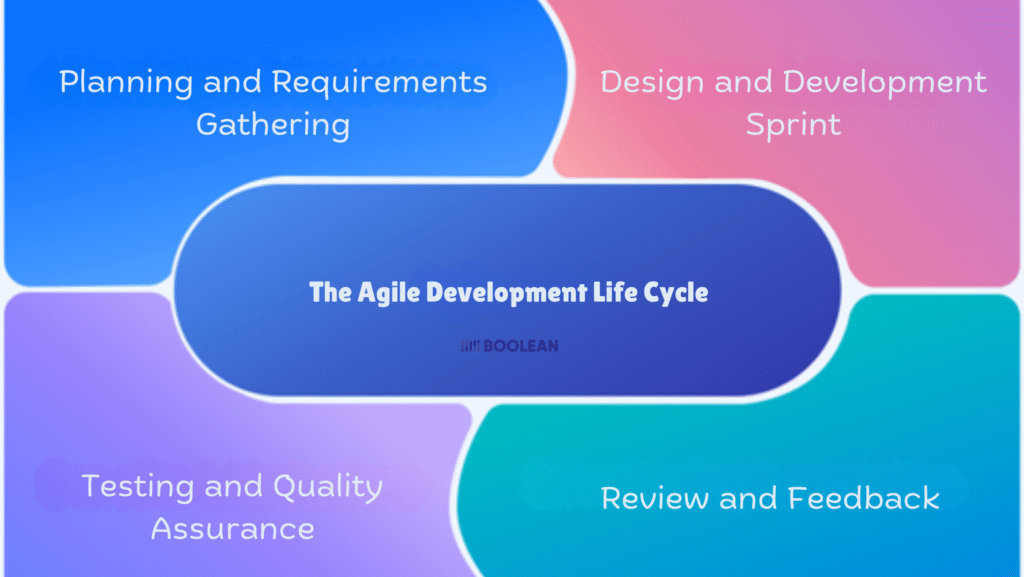Introduction
Imagine you’re building your dream house. Would you rather wait two years to see the finished product, only to discover the kitchen isn’t quite right?
Or would you prefer to build it room by room, making adjustments as you go? That’s essentially the difference between traditional software development and agile custom software development.
If you’re new to the world of software development, you might be wondering what all the buzz about “agile” is.

Simply put, agile custom software development is a modern approach to creating software that’s specifically tailored to your business needs, built in small, manageable pieces rather than all at once.
Think of it like cooking a meal for friends.
Instead of spending hours preparing a five-course dinner that might not suit everyone’s taste, you start with appetizers, get feedback, and adjust the main course accordingly.
That’s the agile development methodology in action; it’s all about flexibility, collaboration, and continuous improvement.
In traditional software development, teams would spend months planning every detail before writing a single line of code. But agile development’s meaning goes beyond just speed; it’s about creating software that truly works for you.
The agile development model breaks projects into smaller chunks called “sprints,” typically lasting 2-4 weeks. After each sprint, you get to see working software, provide feedback, and guide the next steps.
This approach has revolutionized how custom software is built.
Whether you’re a small business owner looking to digitize your operations or a manager tasked with improving company processes, understanding agile development in software engineering can help you make better decisions about your technology investments.
In this guide, we’ll walk you through everything you need to know about agile custom software development, no technical degree required.
You’ll learn how this approach can save you time and money while delivering software that actually solves your problems.
What is Agile Custom Software Development?

Agile custom software development combines two powerful concepts: the flexibility of agile development methodology with the personalized approach of custom software creation.
It’s a way of building software that’s uniquely designed for your specific business needs while using an adaptive, iterative process.
At its core, the agile development model focuses on delivering working software in short cycles, typically every 2-4 weeks.
Unlike off-the-shelf solutions, custom software agile development means your software is built specifically for your business processes, challenges, and goals, but it’s created incrementally rather than all at once.
The agile development process emphasizes:
- Regular communication between developers and clients
- Frequent delivery of working features
- Flexibility to change requirements as needed
- Continuous testing and improvement
This approach transforms how businesses get their software. Instead of waiting months or years for a complete system, you see progress quickly and can guide the development based on real-world use.
The agile development cycle ensures that what’s being built actually matches what you need, not what someone thought you needed six months ago.
For businesses seeking tailored solutions, agile development in software engineering offers the best of both worlds: software that fits like a glove and a development process that adapts as your understanding of your needs evolves.
Whether you’re automating workflows, creating customer portals, or building internal tools, this approach ensures you get exactly what your business requires to succeed.
The Foundation: Understanding Agile Development Methodology

To truly grasp agile custom software development, you need to understand what makes agile development methodology so different from traditional approaches.
Think of it as the difference between following a rigid recipe versus cooking with a flexible approach that lets you taste and adjust as you go.
The agile development approach was born from a simple realization: software development projects often fail not because of poor coding, but because what gets built doesn’t match what users actually need.
Traditional methods, often called “waterfall,” require you to define everything upfront, like trying to plan your entire week’s meals on Sunday without knowing what you’ll be craving by Wednesday.
Agile development principles are built on four core values that guide every decision:
- People and Interactions
Interactions with people matter more than rigid processes. Your development team works closely with you, having regular conversations rather than just following a predetermined plan.
This means if you realize halfway through that you need a different feature, it’s not a disaster; it’s an opportunity to build something better.
- Working Software
Instead of spending weeks writing detailed specifications that might become outdated, agile development techniques focus on creating actual, usable software that you can see and test.
You get to experience your software as it’s being built, not just read about it.
- Customer Collaboration
Collaboration with the customer replaces contract negotiation. Rather than defining every detail in a contract and sticking to it rigidly, agile development in software engineering treats you as a partner in the creation process.
Your feedback shapes the final product.
- Responding to Change
Business needs evolve, and the agile development model in software engineering embraces this reality. When market conditions shift or you discover new requirements, the process adapts with you.
This foundation makes agile development particularly powerful for custom software because it acknowledges that you might not know exactly what you need until you start using it.
Key Components of Agile Development
Understanding the building blocks of agile development is like learning the ingredients of your favorite recipe; once you know what goes into it, the whole process makes much more sense.
Let’s break down the essential components that make agile custom software development work so effectively.
The Agile Development Cycle
Unlike traditional methods, where you wait months to see results, the agile development cycle operates in short, repeating phases called sprints. Each sprint typically lasts 2-4 weeks and delivers working software you can actually use and test.
Think of it as building your software in chapters rather than writing the entire book before anyone can read it.
Essential Agile Development Techniques
It includes several key practices that keep projects on track. Daily stand-up meetings ensure everyone knows what’s happening.
These are brief 15-minute check-ins where team members share progress and identify any roadblocks.
Sprint planning sessions help prioritize what gets built next based on your most pressing needs. And sprint reviews let you see the completed work and provide immediate feedback.
User Stories
User stories are perhaps the most important agile development technique.
Instead of writing lengthy technical specifications, requirements are captured as simple stories from the user’s perspective.
For example, “As a customer, I want to track my order status so I can plan when to be home for delivery.” This approach keeps the focus on real people solving real problems.
The Agile Development Process
Agile process also includes regular retrospective meetings where the team reflects on what’s working well and what could be improved.
This continuous learning approach means your project gets better with each sprint, not just in terms of features but in how efficiently the team works together.
Agile Development Ceremonies
These include sprint planning, daily standups, sprint reviews, and retrospectives.
Each ceremony serves a specific purpose in keeping the agile development cycle diagram flowing smoothly while maintaining transparency and collaboration throughout the entire process.
Benefits of Agile Custom Software Development

When businesses choose agile custom software development, they’re not just picking a development method; they’re investing in an approach that delivers real, measurable advantages.
Let’s explore why so many companies are making this switch and how it can benefit your organization.
Faster Time to Market
This is one of the most compelling agile development benefits. Instead of waiting 12-18 months for a complete system, you start seeing working features within weeks.
The agile development process delivers functional software incrementally, meaning you can begin using and benefiting from parts of your system while other features are still being developed.
This is like getting to drive your car while the manufacturer is still adding the premium sound system.
Enhanced Flexibility and Adaptability
Flexibility sets agile development methodology apart from traditional approaches. Business requirements change; that’s simply reality.
With agile development, these changes aren’t roadblocks; they’re opportunities to build something even better. If market conditions shift or you discover new user needs, the agile development model adapts seamlessly without derailing the entire project.
Improved Quality Through Continuous Testing
Testing ensures your software works reliably from day one. Agile development techniques include testing throughout the development process, not just at the end.
This means bugs are caught and fixed quickly, and you’re never surprised by major issues during final delivery. It’s like having a mechanic check your car after every mile rather than waiting until the engine breaks down.
Better Cost Control
It comes naturally with the agile development cycle. Because you see progress regularly and can adjust priorities, you avoid the expensive mistake of building features nobody needs.
You can also stop development when you have enough functionality to meet your immediate needs, then add more features later when budget allows.
Stronger Collaboration and Communication
It transforms how your team works with developers. Agile development breaks down the traditional wall between technical teams and business users.
Regular demos, feedback sessions, and collaborative planning mean everyone stays aligned on goals and expectations.
Reduced Risk
Traditional development methods can fail spectacularly after months of work.
Agile custom software development reduces this risk by delivering working software frequently, allowing course corrections before small problems become big disasters.
The Agile Development Life Cycle: Step by Step

Understanding the agile development life cycle is like learning a dance; once you know the steps, everything flows naturally.
Unlike traditional software development that follows a rigid sequence, the agile development cycle is designed to repeat and improve with each iteration.
Let’s walk you through each phase so you will know exactly what to expect when working with agile development teams.
Phase 1: Planning and Requirements Gathering
This isn’t about creating massive software development documentation that nobody reads.
Instead, your team identifies the most important features needed for the next 2-4 weeks.
The agile development approach focuses on capturing user stories in agile development that describe what people actually need to accomplish.
Requirements in agile development are gathered collaboratively, with the voice of customer in agile development guiding priorities. This phase demonstrates how agile development emphasizes flexibility over rigid planning.
Phase 2: Design and Development Sprint
In this agile development workflow phase, your agile development team takes the prioritized features and starts building them using proven agile development techniques in software engineering.
The agile development model emphasizes working software over perfect documentation, so developers focus on creating functional features you can actually use.
Daily stand-up meetings keep everyone aligned through agile development ceremonies, and any roadblocks are addressed quickly. This agile development sprint typically lasts 1-4 weeks, following the agile development timeline established during planning.
Phase 3: Testing and Quality Assurance
Testing in agile development includes multiple approaches: qa in agile development, quality assurance in agile development, and regression testing in agile development.
Agile development in software engineering includes testing as an integral part of the process. User acceptance testing in agile development ensures features meet real-world needs.
This approach catches problems early when they’re easier and cheaper to fix, demonstrating the benefits of test automation in agile development.
Phase 4: Review and Feedback
This is your opportunity to see working software, provide feedback, and guide the next iteration.
The agile development cycle diagram shows this as a crucial feedback loop that keeps the project aligned with your actual needs. Sprint retrospective meetings help teams reflect on what worked well and identify improvements for future phases of agile development.
Retrospective and Continuous Improvement
Wraps up each cycle by reflecting on the agile development experience.
Teams examine their agile development workflow diagram, discuss agile development best practices, and plan improvements. Then the life cycle of agile development begins again with planning for the next sprint, incorporating lessons learned and any new priorities.
This continuous improvement approach ensures your agile development process becomes more efficient over time, embodying the core principles of agile development and demonstrating why agile development ensures quick turnaround of projects.
Essential Agile Development Tools and Frameworks
Choosing the right agile development tools is like selecting the perfect toolkit for building your dream home.
Having the right instruments makes all the difference in creating something amazing.
Whether you’re new to agile development or looking to improve your current setup, understanding these essential tools and frameworks will help you succeed with agile custom software development.
Popular Agile Development Software
Forming the backbone of most successful projects, Jira agile development stands out as one of the most widely used platforms, offering comprehensive Jira agile development workflow management and Atlassian Jira integration for agile development.
ServiceNow agile development provides enterprise-level capabilities, while GitHub agile development and GitLab agile development offer excellent version control integration.
These agile development technologies help teams track progress, manage agile development user stories, and maintain clear communication throughout the agile development process.
Scrum vs Kanban
Understanding Agile Frameworks represents a crucial decision in your agile development approach.
Scrum agile development follows structured agile development ceremonies including sprint planning, daily standups, and retrospectives.
Scrum is a type of agile development that works well for teams needing clear structure and regular delivery cycles.
Kanban agile development, on the other hand, uses the Kanban framework in agile development to visualize workflow and limit work in progress.
Both are proven agile development methodologies that support custom software agile development.
Project Management and Planning Tools
They help organize your agile development projects.
Microsoft Project for Agile Development offers traditional project management features adapted for agile workflows.
A Gantt chart for agile development provides visual timeline management, though many teams prefer simpler agile development chart formats.
Azure DevOps integration for agile development combines Microsoft’s development tools with agile practices, while free agile development tools like Trello offer basic functionality for smaller teams.
Development Environment and Technical Tools
They support the actual coding work. Version control system in agile development is essential, with Git being the most popular choice.
Agile Java development often uses tools like Spring and Hibernate, while agile web development might leverage frameworks like Rails.
Agile development using Scrum typically includes continuous integration tools that automate testing and deployment.
Specialized Tools for Different Needs
Address specific aspects of agile development in software engineering. Agile development qa tools help manage testing workflows, while agile development training platforms provide learning resources.
Agile development certification programs often recommend specific tool combinations.
Whether you’re working on agile hardware development, mainframe agile development, or agile nearshore development, choosing tools that match your team’s agile development experience and agile development environment is crucial for success.
The key is selecting tools that enhance collaboration, maintain transparency, and support the agile development principles that make this methodology so effective for agile custom software development.
Building Your Agile Development Team
Creating an effective agile development team is like assembling a championship sports team; you need the right players in the right positions, all working toward a common goal.
Understanding agile development team roles and how they work together is crucial for successful agile custom software development.
Key Roles in Agile Development
Form the foundation of any successful project. The role of product owner in agile development involves representing the customer’s voice and prioritizing features based on business value.
This person is considered the customer in an agile development team and makes critical decisions about what gets built next.
The scrum master facilitates agile development ceremonies and removes obstacles that might slow down the team.
An agile development scrum master acts as a coach, helping the team follow agile development best practices and continuously improve their process.
Development Team Structure and Size
The recommended size of an agile development team typically ranges from 5-9 people, following the principle that teams should be small enough to be fed by two pizzas.
Agile development team structure includes developers, testers, designers, and other specialists needed for the project.
Who is responsible for testing in an agile development team varies, but often includes dedicated QA professionals working alongside developers who also perform testing.
This collaborative approach ensures quality assurance in agile development happens throughout the development process.
Essential Skills and Experience
It helps teams succeed with agile development methodologies.
Familiarity with agile development methodologies and experience with agile development methodologies are valuable, but teams can also learn together.
Knowledge of agile development methodologies includes understanding agile development principles, agile development techniques, and agile development workflow.
Familiarity using Scrum agile development methodologies helps teams implement structured approaches effectively.
Communication and Collaboration Practices
Keep agile development teams aligned and productive.
Daily standups, sprint planning, and retrospectives create regular touchpoints for sharing progress and addressing challenges.
Agile development emphasizes face-to-face communication when possible, though distributed agile development and agile nearshore development have proven that remote collaboration can work effectively with the right tools and practices.
Team Dynamics and Culture
Culture plays a crucial role in agile development success. Teams need psychological safety to experiment, fail fast, and learn from mistakes. Agile development training helps team members understand their roles and responsibilities.
Organizational structure for agile development should support cross-functional collaboration rather than traditional silos.
Scaling and Growth Considerations
Large scale agile development requires additional coordination and planning. Agile development at scale the next frontier involves managing multiple teams working on related products.
Whether you’re building a small internal tool or managing enterprise agile development, having the right team structure and culture makes all the difference in achieving your agile custom software development goals.
Common Challenges and How to Overcome Them
Even the best agile development projects face obstacles along the way.
Understanding these common challenges and their solutions helps you navigate the agile development process more effectively and ensures your agile custom software development project stays on track.
Resistance to Change and Cultural Barriers
It often emerges when organizations transition from traditional methods to agile development methodology.
Teams accustomed to waterfall vs agile development approaches may struggle with the flexibility and collaboration required.
Plan driven vs agile development represents a fundamental shift in thinking. The solution involves comprehensive agile development training and demonstrating early wins.
Agile development course offerings and introduction to agile development and scrum programs help teams understand what is agile development and why it works.
Leadership must champion the advantages of agile development while acknowledging the disadvantages of agile development honestly.
Scope Creep and Changing Requirements
While agile development embraces change, unlimited scope expansion can overwhelm teams. Requirements gathering essential in agile development must balance flexibility with focus.
The solution involves clear agile development governance and regular stakeholder communication.
Agile development epics and stories help break down large requirements into manageable pieces. Cost estimation in agile development projects becomes more predictable when scope is properly managed through disciplined agile development planning.
Communication and Coordination Issues
Multiply as teams grow larger or become distributed. Distributed agile development faces unique challenges around time zones and cultural differences.
Agile nearshore development requires extra attention to communication protocols. Solutions include investing in collaboration tools, establishing clear agile development workflow, and maintaining regular agile development ceremonies.
Daily standups become even more critical for distributed teams, and agile development documentation must be more comprehensive to bridge communication gaps.
Quality and Technical Debt Concerns
It arises when teams prioritize speed over sustainability.
Problems with agile methods often stem from cutting corners on testing or architecture. Quality control in agile development requires discipline and proper agile development techniques.
Solutions include implementing test automation in agile development, maintaining coding standards, and allocating time for refactoring in agile development.
Continuous integration and regression testing in agile development help catch issues early.
Resource and Budget Constraints
A challenge for many agile development projects.
Agile development business cases must account for iterative delivery and changing requirements.
Solutions involve careful agile development planning, realistic agile development timeline setting, and clear communication about agile development benefits versus costs.
Agile development KPIs help track progress and demonstrate value to stakeholders.
Scaling and Integration Challenges
Agile development at scale requires additional coordination mechanisms. Large scale agile development may need frameworks like SAFe or LeSS.
Solutions include establishing agile development centers, implementing agile development governance structures, and maintaining agile development best practices across multiple teams.
Enterprise agile development success depends on balancing autonomy with alignment across the organization.
Getting Started with Agile Custom Software Development
Taking your first steps into agile custom software development can feel overwhelming, but with the right approach, you’ll soon discover why so many businesses are making this transition.
Whether you’re a complete beginner or transitioning from traditional software development methods, this guide will help you start your agile development journey successfully.
First Steps for Beginners begin with understanding what is agile development and agile development meaning in practical terms.
Start by reading foundational resources like agile development books such as The Art of Agile Development by James Shore, or taking an agile development course.
Learn agile development through software development online courses or introduction to agile development and scrum programs.
Many professionals pursue agile development certification to validate their knowledge. Software development bootcamp programs increasingly include agile methodology training, recognizing its importance in modern software development.
Choosing the Right Approach and Framework
It depends on your specific needs and context. Scrum agile development works well for teams needing structure and regular delivery cycles, while Kanban agile development suits teams preferring continuous flow.
Lean agile development focuses on eliminating waste, and crystal agile development adapts to team size and project criticality.
Consider whether you need rapid agile development for time-sensitive projects or can follow a more measured pace.
Agile development vs waterfall comparisons help you understand when agile development makes sense versus traditional approaches.
Building Your Foundation
It requires establishing the right agile development environment and culture.
Start with basic agile development concepts and gradually introduce agile development techniques. Set up essential agile development tools like project management software and version control systems.
Create an agile development workflow that fits your team’s needs. Establish agile development ceremonies including daily standups, sprint planning, and retrospectives.
Focus on agile development principles rather than rigid adherence to specific methodologies.
Finding the Right Development Partner
It becomes crucial if you’re outsourcing your project.
Look for software development companies with proven experience with agile development methodologies.
Top agile software development companies demonstrate their expertise through case studies and client testimonials.
Consider software development outsourcing options including agile nearshore development for cost-effective solutions.
Evaluate potential partners based on their knowledge of agile development methodologies, agile development best practices, and cultural fit with your organization.
Planning Your First Project
Choose a project that demonstrates clear benefits of agile development methodology without being mission-critical.
Define success metrics and agile development KPIs to track progress. Establish a realistic agile development timeline and budget.
Plan for agile development training for your team members. Consider starting with a minimum viable product (MVP in agile development) approach to deliver value quickly.
Setting Expectations and Success Criteria
Communicate the advantages and disadvantages of agile development honestly to stakeholders. Establish clear objectives of agile development for your specific context.
Plan for the agile development experience to evolve as your team learns and improves. Remember that agile development is a journey of continuous improvement, not a destination.
With proper preparation and realistic expectations, your agile custom software development project can deliver exceptional results while building capabilities for future success.
How Boolean Inc. Can Transform Your Agile Custom Software Development Journey
When you’re ready to embark on your agile custom software development journey, partnering with the right software development company can make all the difference between success and frustration.
Boolean Inc. stands out as a leading provider of agile development services, combining deep technical expertise with proven agile development methodologies to deliver exceptional results for businesses of all sizes.
Our Agile Development Expertise
Our team brings extensive experience with agile development methodologies, including Scrum agile development, Kanban agile development, and lean agile development approaches.
We understand that every business is unique, which is why we tailor our agile development approach to match your specific needs, timeline, and budget.
Our developers have familiarity using Scrum agile development methodologies and stay current with the latest agile development best practices and agile development technologies.
Comprehensive Service Offerings
It covers every aspect of your agile custom software development needs. From initial requirements gathering essential in agile development through final deployment and ongoing support, Boolean Inc. manages the entire agile development life cycle.
Our services include agile development planning, user stories in agile development creation, agile development workflow design, and comprehensive quality assurance in agile development.
We excel at rapid agile development when time-to-market is critical, while maintaining the highest standards for quality control in agile development.
Proven Track Record and Results
Our portfolio includes successful agile development projects across industries, from startups needing MVP in agile development solutions to enterprises requiring large scale agile development implementations.
We’ve helped clients achieve the benefits of agile development methodology including faster time-to-market, improved quality, and better cost control.
Our agile development teams consistently deliver projects on time and within budget while exceeding client expectations.
Advanced Tools and Technologies
We leverage industry-leading solutions including Jira Agile development for project management, GitHub Agile development for version control, and Azure DevOps integration for agile development for comprehensive development workflows.
Our expertise extends to agile Java development, agile web development, and modern frameworks that support agile development in software engineering.
Collaborative Partnership Approach
We believe in transparent communication, regular feedback, and collaborative decision-making throughout the agile development process.
Our agile development team structure includes dedicated product owners who serve as your voice of customer in agile development, ensuring your business needs remain the top priority.
We provide regular agile development training and knowledge transfer to help your internal team understand and participate in the development process.
Getting Started with Boolean Inc. is straightforward and risk-free.
We begin with a comprehensive consultation to understand your agile development needs and goals.
Our team provides honest assessments of project scope, timeline, and budget, helping you make informed decisions about your agile custom software development investment.
Whether you need agile nearshore development support or full-service development, Boolean Inc. has the expertise and experience to transform your vision into reality using proven agile development methodologies.
Conclusion: Your Path Forward with Agile Custom Software Development
As we reach the end of this comprehensive guide, you now have a solid foundation for understanding agile custom software development and how it can transform your business.
The journey from traditional software development methods to agile development methodology represents more than just a change in process; it’s a fundamental shift toward building software that truly serves your needs.
Key Takeaways from Your Agile Development Journey
Agile development isn’t just about faster delivery; it’s about creating software that evolves with your business.
The benefits of agile development methodology extend far beyond technical advantages; they include improved collaboration, reduced risk, better quality, and ultimately, software that delivers real business value.
Understanding what is agile development and its core principles gives you the foundation to make informed decisions about your technology investments.
The Strategic Advantage of Agile Custom Software Development
While off-the-shelf solutions might seem cheaper initially, custom software agile development provides exactly what your business needs without unnecessary complexity or limitations.
The agile development process ensures you’re not locked into decisions made months ago that no longer fit your current reality. This flexibility is invaluable in today’s rapidly changing business environment.
Choosing the Right Partnership can accelerate your success significantly.
Whether you work with an internal team or partner with experienced agile software development companies, ensure they have proven experience with agile development methodologies and a track record of successful agile development projects.
The right partner will guide you through the agile development life cycle, help you avoid common pitfalls, and ensure your project delivers the advantages of agile development you’re seeking.
The path forward is exciting, and the potential for transformation is limitless. Your agile development adventure starts now.
FAQs
- What is the main difference between agile and waterfall development?
Agile development delivers working software in short iterations with continuous feedback, while waterfall follows a linear sequence where each phase must be completed before the next begins.
- How long does a typical agile development sprint last?
Most agile development sprints last between 1-4 weeks, with 2-week sprints being the most common duration for agile custom software development projects.
- Can agile development work for large enterprise projects?
Yes, large scale agile development frameworks like SAFe and LeSS have proven successful for enterprise projects, though they require additional coordination and agile development governance.
- What skills do I need to work in an agile development team?
Agile development teams value collaboration, adaptability, and continuous learning more than specific technical skills, though familiarity with agile development methodologies is beneficial.
- Is agile development more expensive than traditional methods?
Agile development often reduces overall costs by catching issues early, avoiding unnecessary features, and delivering value incrementally, though initial setup may require investment in agile development training and tools.







